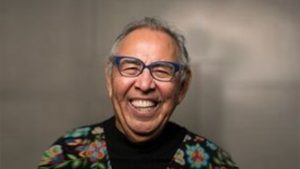 By Maya Gunnarsson
By Maya Gunnarsson
While interning for the Akwesasne Justice Department this summer, one of my tasks has been to help provide information to community members on the claims process for the Federal Indian Day Schools (IDS) Settlement.
When talking to family members and friends about the work I am doing, I have found that the most common question I hear is “What are the Indian Day Schools?”. While the majority of Canadians are now aware of the history of Indian Residential Schools (IRS) in Canada, many have never heard of the IDS, which ran from the 1860s until 2000. The goal of the IDS was the same as that of the IRS—to strip Indigenous children of their cultural identity and assimilate them into the dominant culture. Similar to IRS, children at the IDS were prohibited from speaking their language, and many experienced verbal, physical, and sexual abuse. The principal difference between the IDS and IRS, is that children at the IDS returned home every day, rather than living at the schools.
In 2006, a settlement agreement was made between survivors of IRS, the churches that operated them, and the federal government. In addition to financially compensating former students for the harms they suffered at IRS, the settlement agreement mandated the establishment of the Truth and Reconciliation Commission (TRC). The TRC gathered statements from survivors and issuing a final report that documented the experiences of IRS survivors. Released in 2015, the TRC’s Final Report included 94 Calls to Action, aimed at governments, educational institutions, churches, and the corporate sector, intended to redress the legacy of residential schools and to advance the reconciliation process.
Over the past 5 years, many of the TRC’s Calls to Action have begun to be implemented, and while there may be fair criticisms levelled at the government for their commitment to implementing all the recommendations (for example, this Yellowhead Institute’s assessment found that only 9 Calls to Action had been completed by the end of 2019), it is undeniable that Canadians’ knowledge of the history of IRS has significantly increased as a result of the TRC’s final report. However, while many non-Indigenous Canadians are now aware of legacy of IRS, the same cannot be said about the Federal Indian Day Schools that ran concurrently with the residential schools.

In 2009, Gary McLean, a survivor of the IDS, launched a class action seeking compensation for the harms suffered by students at IDS. In 2019, a settlement agreement was reached, and in January 2020 the claims process for survivors was opened. The settlement process differs significantly from that of the IRS. In 2018, the National Centre for Truth and Reconciliation (the successor to the TRC) released a report detailing how the IRS settlement process retraumatized many survivors. One of the biggest ways in which former IRS students felt traumatized by the settlement process was the sheer number of times they had to recount the traumatic experiences they had in the residential schools. Survivors were only compensated for the harm they experienced if they provided “sufficient evidence,” and the whole process felt very adversarial for many. Further, speaking about the abuse they endured in IRS triggered Post-Traumatic Stress Disorder for many survivors, which stopped them from providing statements. The full disclosure required of survivors prevented many from testifying at all and accessing the settlements they were entitled to.
In response to this process and negative experience of IRS survivors, former IDS students are not required to provide any testimony to receive the level 1 claim amount—they must simply identify the school they attended and the years they attended it. For those survivors who are eligible for claim levels 2-5 (those who experienced any form of sexual abuse, or physical abuse causing serious harm), they must provide a written narrative that details the events that led to the harm they suffered. They must also provide some form of proof that they attended the school (e.g. report cards, class photos, yearbooks, etc.) and for claim levels 4 and 5, their narratives must be accompanied by some other form of corroborating records (such as medical, dental, or therapy records). However, for those unable to attain such records, survivors can submit a sworn declaration in lieu. Survivors will not be cross-examined or asked to verbally repeat their testimony. Further, there is a limit on the number of cases that Canada can challenge the eligibility for. In these cases, the government may provide supplemental factual information regarding eligibility to the Claims Administrator; however, they do not engage directly with the survivor. The claims process will remain open until July 2022, and it remains to be seen whether survivors will have a more positive experience with this claims process than with the IRS settlement claims process.
In addition to the compensation for former students, the IDS settlement also outlines the establishment of a Legacy Fund, to which Canada has agreed to provide $200 million. The purpose of this fund will be to fund projects that commemorate, provide wellness and healing, or promote the restoration of Indigenous languages and culture. The Legacy Fund was initially estimated to be up and running by fall 2020; however, due to uncertainties caused by COVID-19, this will likely be delayed. Whenever the Fund is ready to provide grants to Legacy Projects, I hope we will begin to see an increase in the average Canadian’s awareness of IDS and their legacy. This summer I have informed many of my friends and family members about the history of IDS in Canada—hopefully in a few summers time, Canadians will be just as aware of Indian Day Schools and their impacts as they are now of Indian Residential Schools.
